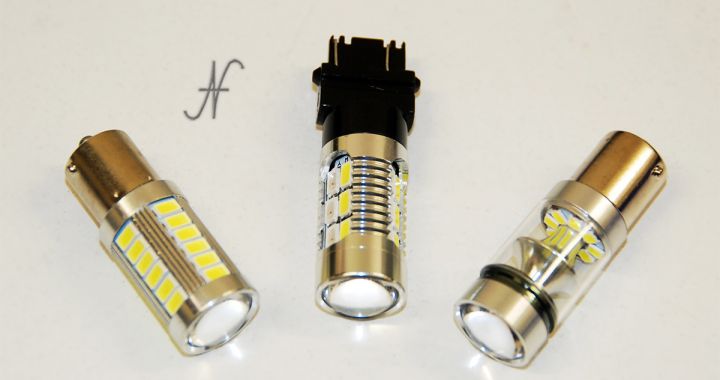Who tried to replace the bulbs of the arrows of the machine with LED ones?
Were there any problems?

We all know the answer: yes! Do the arrows flash too fast (new cars) or too slowly (vintage cars)? Do you see any errors?
In this article I will explain how to avoid the error of the control unit of the car when installing LED bulbs instead of incandescent ones. I will also explain how to flash the turn signals correctly.
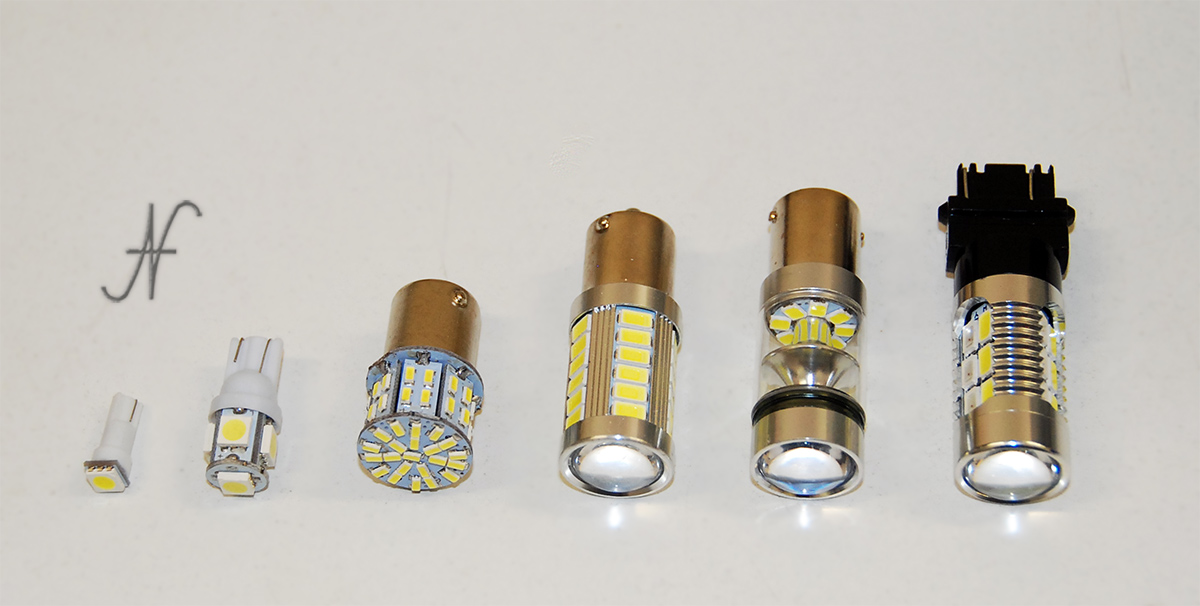
Why does the car ECU error happen?
When you replace, with LED bulbs, position lights, direction indicators, reversing bulbs or stops, where previously incandescent bulbs were installed, problems can occur and even an error of the car's control unit.
On vintage passenger cars, where there is no electronic control unit, replacement is quite easy, and new light bulbs, if of good quality, will work without problems. Possibly it is possible that the arrows (turn signals) flash too fast or too slowly.

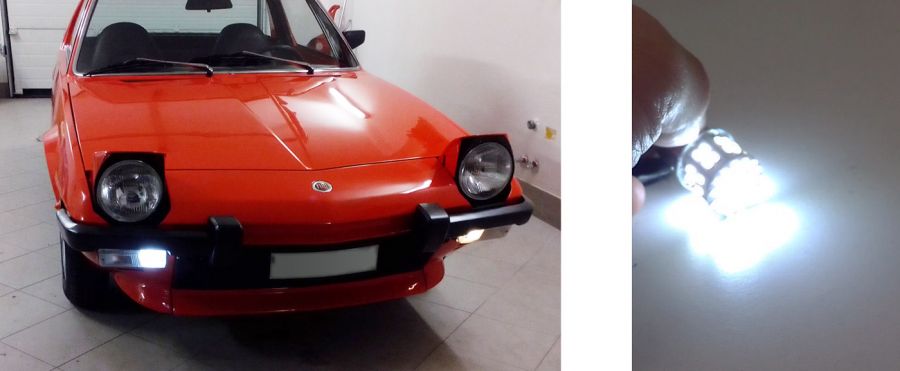
On more modern cars it is much more likely to encounter a control unit error (which some call canbus errors). The error is shown on the car's monitor (EVIC - Electronic Vehicle Information Center), if it is equipped with one, or is stored on the control unit. The arrows (direction indicators) may flash too quickly.
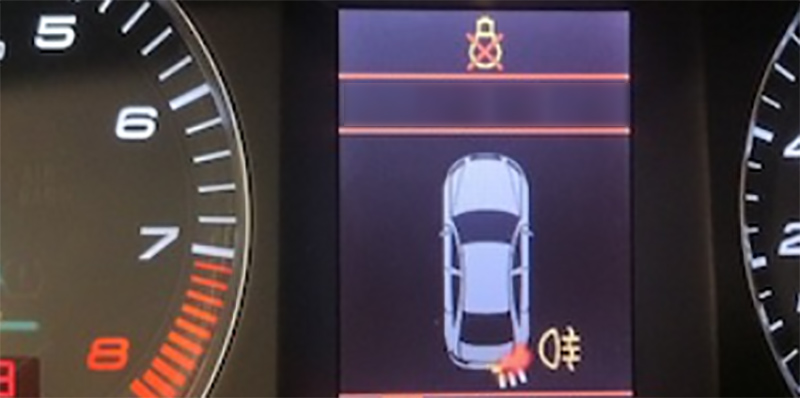
These problems happen because LED bulbs are much more efficient than their incandescent sisters. At equal brightness, they absorb only 5-15% of the current of a traditional light bulb.

No wonder, therefore, that the control unit that controls the lights of the car is surprised that, where before there was a high absorption, now there is practically no more current absorption. In such a situation, an error is raised. The same situation happens for the arrows (direction indicators): if the incandescent bulb absorbed 1.75A (the 12V 21W bulb), an LED bulb can absorb only a few tens or hundreds of mA.
LED indicators on vintage cars
If, after the installation of LED bulbs on the arrows of a classic car, these flash too quickly or slowly, before trying what is indicated in the next paragraph, that is, to connect a resistor of appropriate value in parallel to the LED bulbs, I would suggest replacing the flasher (blinker, flasher, intermittent relay) that is in the car's system, with one suitable for LED bulbs.
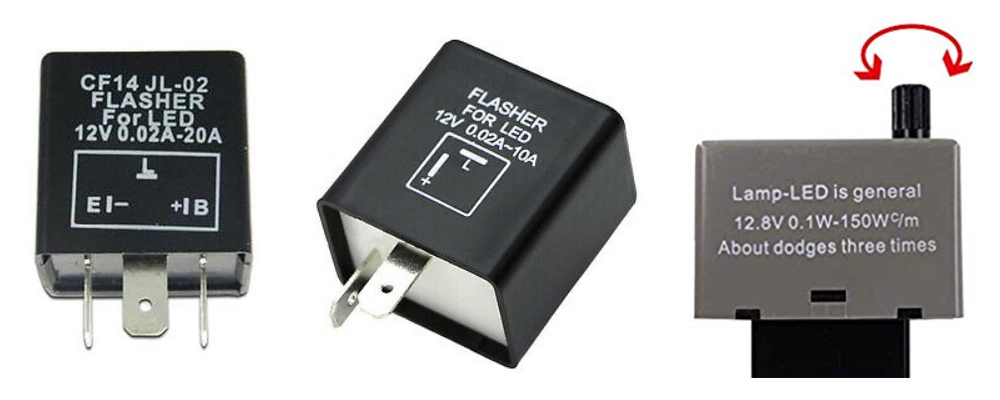
There are several types for sale online. From 2 poles, 3 poles and also with adjustable flashing frequency. I recommend putting back the original relay and use the resistor (as I explain in the next paragraph), only after unsuccessfully trying to replace the flasher.
Solve the error of the control unit
To solve the error of the control unit (or canbus error, as some say), or to restore the correct frequency of flashing of the arrows, it may be necessary to install a resistor in parallel with the LED bulb. I do not hide how this solution is really inelegant: you install light bulbs that consume less and then mount a resistor that dissipates a mountain of energy in heat. It would be better to be able to reprogram the vehicle control unit, so as to activate the alarm only for lower absorptions. It seems that this situation is not very viable, as several control units do not allow you to go so deep into the programming.

Many recommend using a resistor (R) of resistance equal to the one that had the incandescent bulb replaced. For example, replacing a 12V 5W bulb, the resistance would have a value of 27ohm and at least 10W of power. Replacing a 12V 21W bulb, the resistance would have a value of 6-6.8ohm and at least 50W of power.

I partially agree with the values suggested by the most and above. Obviously they are values that allow you to eliminate the error of the control unit, without damaging the system.
Resistor value to eliminate the error of the control unit
I suggest to spend a little' more time to experiment and to install resistors (R) of higher ohmic value, in order to reduce the current absorption and thermal dissipation.

For example, to simulate the load of a 12V 5W bulb, you could start with a 100ohm 10W resistor (which would absorb only 1.5W instead of 5W) and verify that the control unit no longer give error. If there was still an error, you could switch to a resistor from 82ohm 10W, and so on until you reach the value recommended by most, obviously hoping to stop earlier to make the system more efficient.
With regard to the 12V 21W bulb, it is not to be excluded that the control unit is programmed to report the error, for example, at 250mA instead of 1.75A. In this case you could start with a resistance (R) of 47ohm 10W (as the actual absorption would be about 3W) and then get closer and closer to the value of 6ohm (consequently also increasing the power of the resistor (for example 22ohm 10W or 10ohm 25W).
Having to dissipate a lot of heat, I suggest installing the resistors on a metal part of the car, screwing them with screws and using the thermally conductive paste on the surface of the resistor in contact with the metal of the bodywork. Care must also be taken to insulate electrical wiring well.
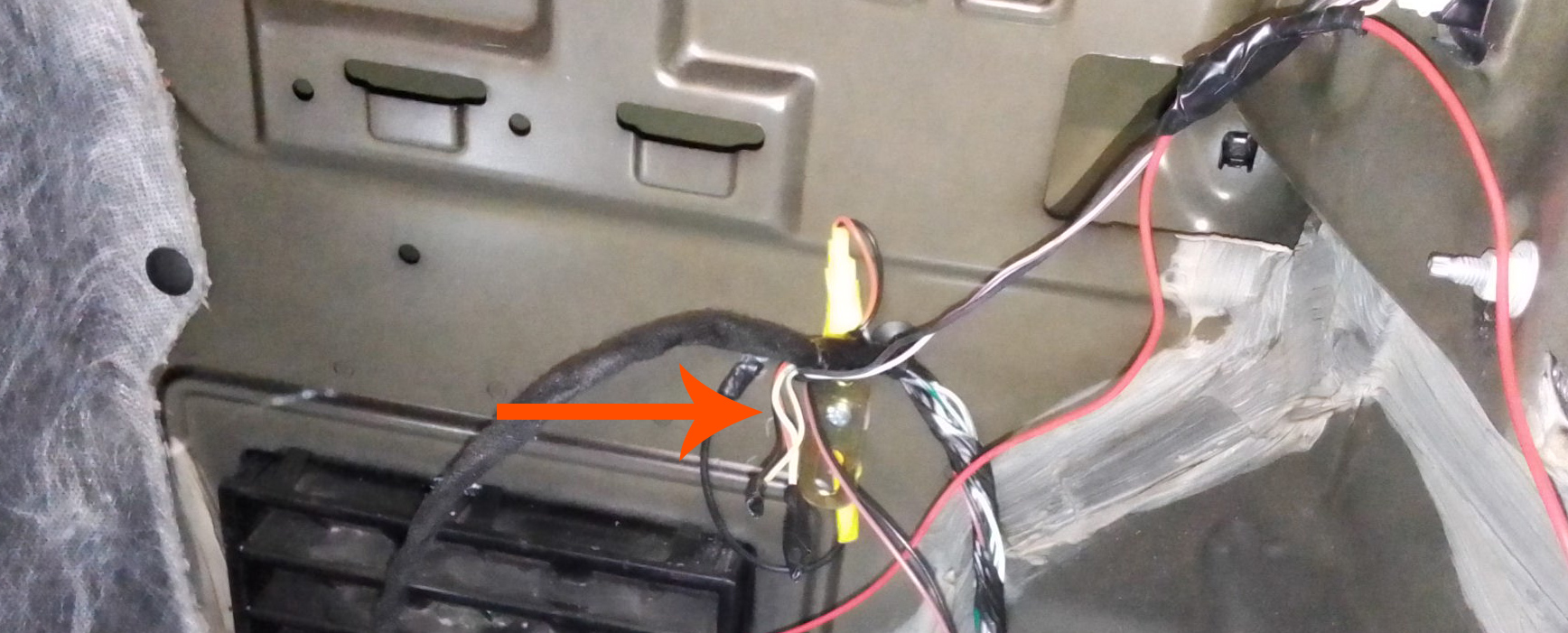
Non-standard absorptions
You don't always have to replace standard light bulbs. Sometimes you understand that you have to make changes to American cars to make them compatible with European regulations, for example. Or you want to replace led light clusters with others more pleasant or performing. Still, it is possible that the new headlight already consumes a lot of energy, but not enough to turn off the error of the control unit. In this case it is not possible to use the values of resistors (R) predefined, but you have to put your hand to the calculator.
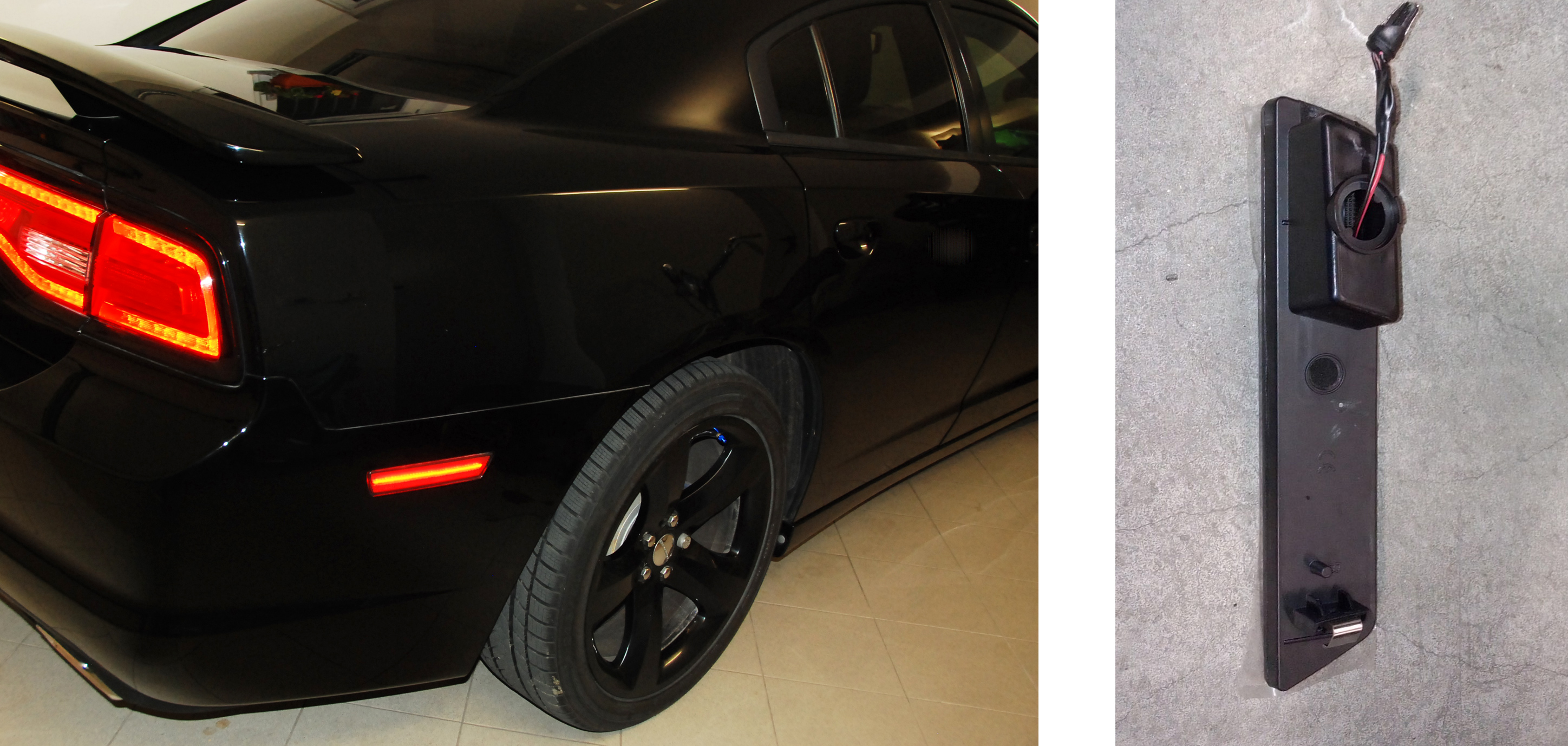
By feeding the old and the new headlight separately, via a 12V bench power supply or battery, you will have to use a current tester to measure the two absorptions.
Suppose we measure the two currents:
– old headlight absorption Iv = 200mA (approximately 2.4W)
– absorption of the new light In = 50mA (approximately 0.6W)
Through resistor (R) in parallel to the new headlight, we will have to increase the absorption of about 150mA (= 0.15A, difference between Iv and In).
We can calculate the value of the resistance by Ohm's first law: R = V / I = 12V / 0.15A = 80ohm.
We will never find on the market an 80ohm resistance, the closest value is 82ohm. We must now calculate the power dissipated by the resistor. W = V * V / R = 12V * 12V / 82ohm = 1.75W. We will have to choose a resistor of greater power, say from 5W for safety.
As explained above, to optimize the thermal dissipation, we can start from a higher value, and then reduce it up to 82ohm. We can start, for example, from a resistor from 180ohm (which would dissip less than 1W), to get closer to the final value.
Reduce the brightness of the LED bulbs
I dedicate this small paragraph to those who would like to reduce the brightness of some LED bulbs that are used as position lights. It often happens, in fact, to buy light bulbs that are too dim as reversing lights, but too bright as position lights!
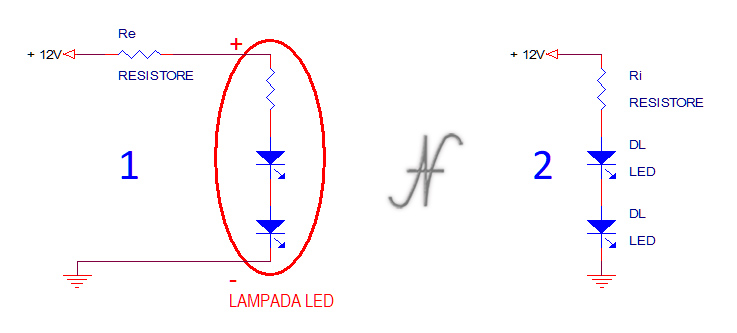
We are obviously talking about bulbs that absorb little current (a few tens of mA) and that have an internal resistance current regulator. For other types of light bulbs, the following does not apply.
Solution 1: if you do not want to open the LED bulb, but prefer to cut the wires of the electrical system of the car, you can install a resistor (in the scheme indicated as Re) in series with the wire that brings the power positive to the bulb. Without going to do too many measurements and too many accounts, you could try resistors from 47ohm 5W or from 100ohm 3W. The higher the resistance value, the less bright the bulb will be.
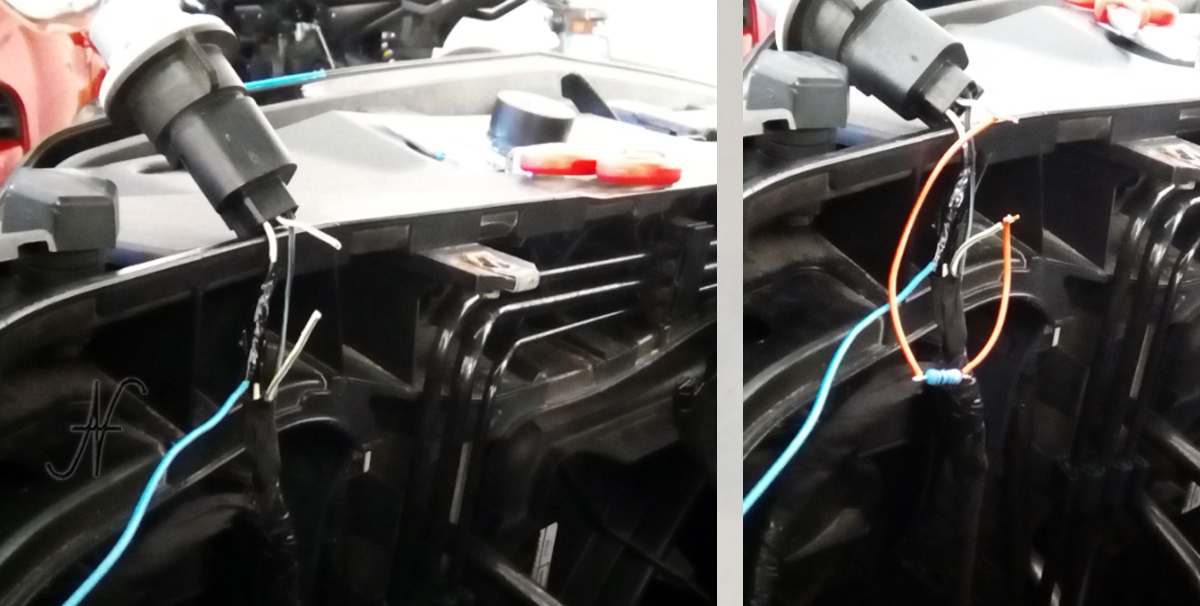
Solution 2: if instead you want to work inside the light bulb, safeguarding the system of the car, you can disassemble the bulb and replace the internal resistors (in the diagram, indicated with Ri) with others of higher value. It is possible to increase these values by 30%, to almost double them if you want to reduce the brightness a lot.
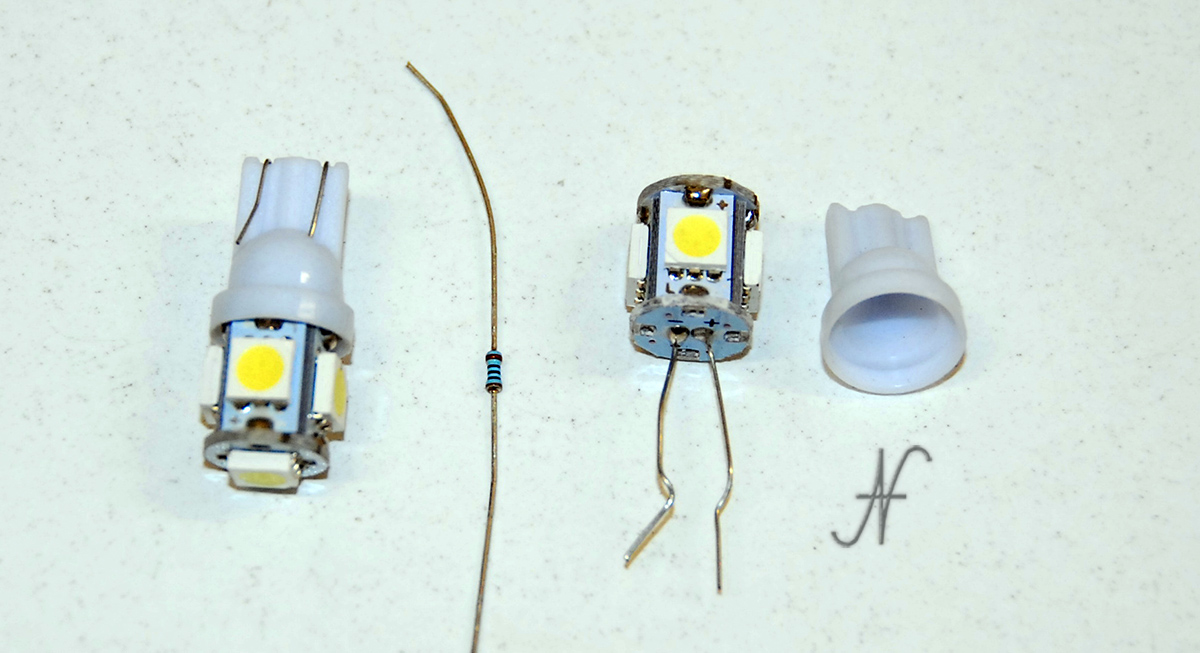
In case of error to the control unit (due to the reduction of the absorption of the bulb), you will have to install a resistor in parallel to the power supply, before the resistor Re.

Finally, for those interested, I wrote a article in which I explain why several LED bulbs that you buy online are damaged quickly.
